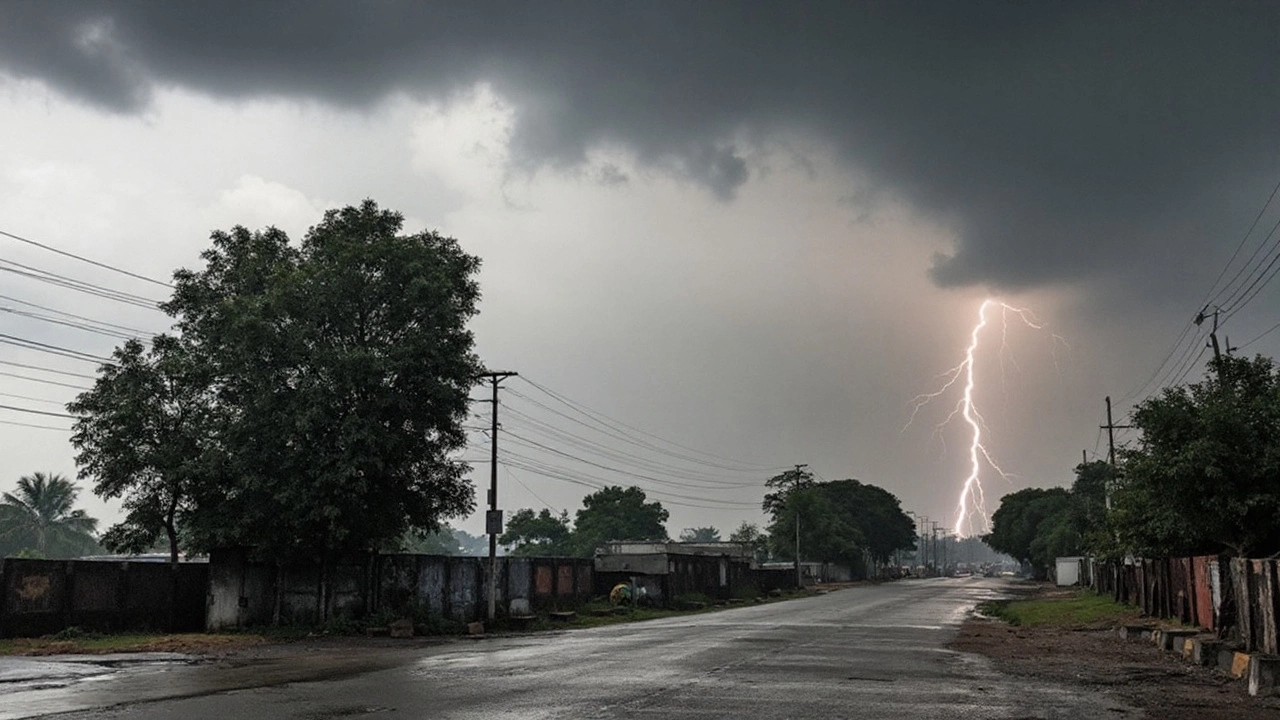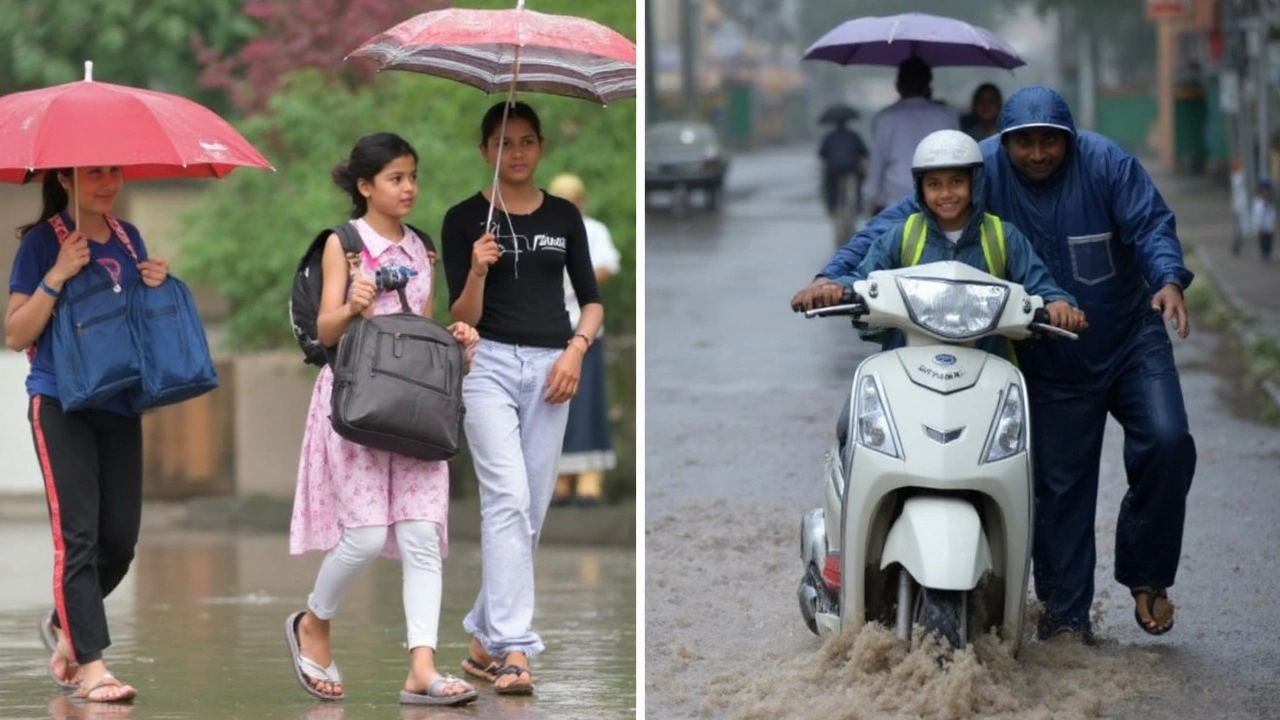
Rivers swell, embankments strain, and daily life grinds to a halt
When the Ganga turns restless, Bihar feels it fast. More than 25 lakh people are now in flood-hit zones across over 10 districts, with water entering homes, fields, and markets. Bhagalpur is bearing the heaviest load—local officials say more than 6.5 lakh people there alone are affected. The flood line at Bhagalpur station touched 34.86 metres, matching the high flood level and crossing the danger mark of 33.68 metres, a clear sign that the situation is still fluid.
This is not a single-river story. The Ganga, Gandak, Kosi, Bagmati, Mahananda, Punpun, and Ghaghra have all swelled after sustained rain in their catchments and heavy downpours upstream in Nepal. When these rivers run full together, the pressure pushes back through tributaries, flooding villages that thought they were safe behind embankments.
The list of worst-hit districts stretches beyond ten: Bhagalpur, Begusarai, Munger, Bhojpur, Patna, Vaishali, Saran, Lakhisarai, Khagaria, Supaul, Katihar, and Buxar are all on flood watch, with several already knee- to waist-deep in water. In pockets of Muzaffarpur and Saran, embankments have given way, sending water surging into low-lying hamlets. The Chachari bridge near Babhangama East Tola has been washed away, cutting off road access and forcing residents to shift by boat to reach the main highway.
In Patna and other towns, relentless rain has created waterlogging that refuses to drain. Power cuts, closed shops, and suspended classes are now routine in the worst pockets. Many families are climbing to rooftops at night just to stay dry, watching the current carry away fodder stacks and household supplies.
Farmers are counting the losses already. This is prime kharif season, when paddy transplantation is in full swing. Floods at this stage can drown nurseries, uproot seedlings, and leave fields silted. In parts of Saran, Khagaria, and Vaishali, freshly planted paddy is submerged, and vegetable patches have turned into ponds. A second sowing is possible in some areas once waters recede, but it costs money and time—two things farmers don’t have much of mid-season.
Livestock is another quiet casualty. Fodder stacks kept in courtyards have been soaked or swept away. The state has asked district teams to arrange fodder and veterinary support. That matters, because losing a milch animal in flood-prone belts is a blow that can take a family years to recover from.
What makes this year tough is the confluence: upstream rain in Nepal filling the Kosi and Gandak, local downpours swelling the smaller rivers, and the Ganga holding water longer than usual. When river levels remain high for days, drainage slows, and even a short rain spell can trigger a fresh round of flooding. Water that should leave the fields sits there, and new rain has nowhere to go.

Rescue on the water, kitchens on land, and the next 72 hours
Chief Minister Nitish Kumar chaired a high-level review and told district administrations to get basic services close to inundated pockets: shelters, cooked meals via community kitchens, and drinking water. He also ordered immediate road inspections and temporary repairs so relief trucks can move. The state has called in the NDRF and SDRF—16 teams are in the field, and more than 1,200 country boats are ferrying people out of marooned tolas and delivering rations where the water is too swift for trucks.
On the ground, the priority is simple: get people to higher ground and keep food moving. Community kitchens are operating in schools and panchayat buildings above flood level. In some places, volunteers are helping elderly residents and children cross waist-deep stretches to reach pickup points. District control rooms are taking distress calls, mapping the demand for boats, tarpaulins, and drinking water cans, and coordinating with block officers to plug gaps.
Public health officials are bracing for the predictable second wave of problems—contaminated water, diarrhoeal disease, and skin infections. Chlorination of wells, distribution of ORS packets, and mobile health teams are standard steps after such flooding. Snakebites usually see a jump in these weeks as snakes get displaced by water; hospitals in the belt keep antivenom stocks ready for that reason alone.
Schools in several low-lying blocks have suspended classes, especially where buildings are being used as relief points. Movement to markets and hospitals is slowed by collapsed culverts and submerged stretches of road. In Saran and Muzaffarpur, people are walking or wading 4–5 feet of water to reach the nearest motorable road before transferring to tractors or boats.
For farmers, assessment teams will be crucial. The Chief Minister has asked officials to start documenting crop losses block by block. Under disaster relief norms, states can provide input subsidies when crop damage crosses notified thresholds. That process takes time, but early enumeration helps unlock compensation and seeds for replanting once floodwaters drop.
Urban pockets have their own set of troubles. Drainage networks in towns like Patna clog quickly when the Ganga is high, leading to backflow into lanes and basements. Prolonged waterlogging means garbage accumulates and mosquitoes explode. Sanitation teams often deploy pumps and bleaching powder, but these measures work only when river levels start easing.
The India Meteorological Department has issued yellow alerts for heavy rain over much of the state. For families watching the sky, the next 72 hours matter. A sustained break in rain over the Ganga basin and Nepal’s Terai can ease pressure on embankments and bring levels down. But even a moderate spell over saturated ground can push fresh water over the banks.
Embankments themselves are under strain in several districts. These structures protect cropland and villages but need constant watch during high flow. District engineers carry out round-the-clock patrolling, plug seepage with sandbags, and deploy earthmoving equipment where sloughing starts. Most breaches happen at weak points or where the river has cut a new channel close to the bank.
Relief agencies say the quickest wins now are practical: more boats in cut-off gram panchayats, portable toilets in busy relief sites, dry rations for households that prefer to cook themselves, and fodder supply to stop distress sale of cattle. Clean drinking water, even via tankers, prevents a lot of avoidable illness. For those who can’t evacuate—people caring for livestock or guarding homes—frequent supply runs make the difference.
Transport is patchy. With bridges like the one at Babhangama East Tola washed away, local administrations are marking alternative routes for ambulances and supply vehicles. In places where that isn’t possible, officials are arranging boat shuttles during daylight hours. Night movement remains risky due to currents and floating debris.
What should residents watch for? Local advisories on river levels; announcements from the block office about evacuation to nearer shelters rather than distant camps; and distribution schedules for cooked meals and drinking water. Keeping phones charged, storing dry food and medicines in waterproof bags, and avoiding wading through moving water can save lives. Village WhatsApp groups and loudspeaker announcements from panchayat buildings continue to be the quickest way to spread updates.
For now, the state’s focus is split between rescue and stabilising daily life. The administration will count the full cost later—damaged roads, washed-away culverts, silted fields, and the sheer effort it takes to restore electricity, hand pumps, and schools. If rain intensity drops, levels on the Ganga and its tributaries should begin to ease in stages. Until then, the watch continues along the embankments, and the long line of boats keeps moving. In a season that often brings both hope and risk to the floodplains, the people of Bihar are riding out another crest of the Bihar floods with grit and the help that keeps inching its way through the water.